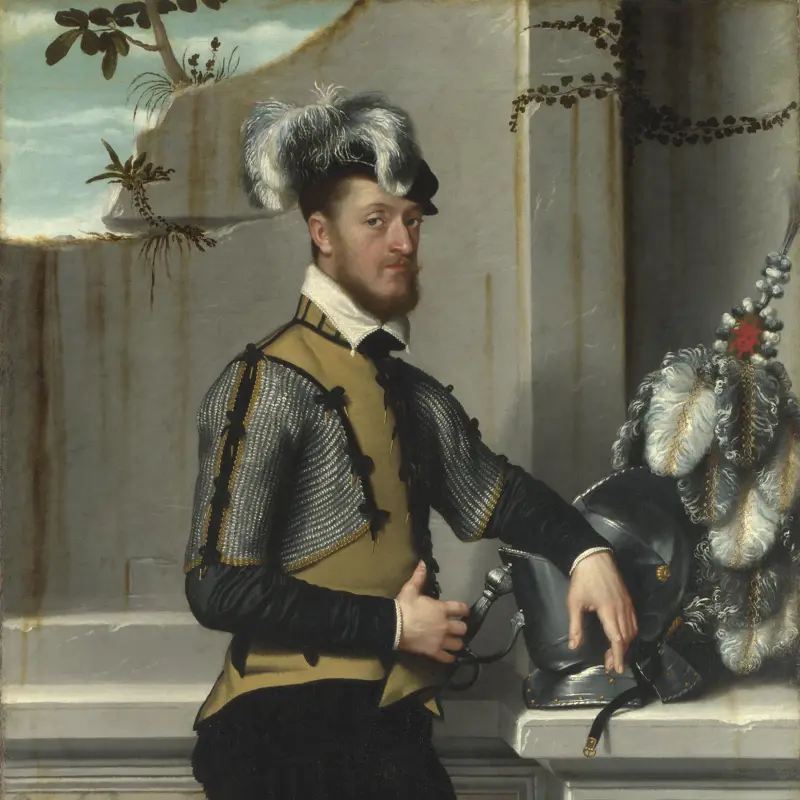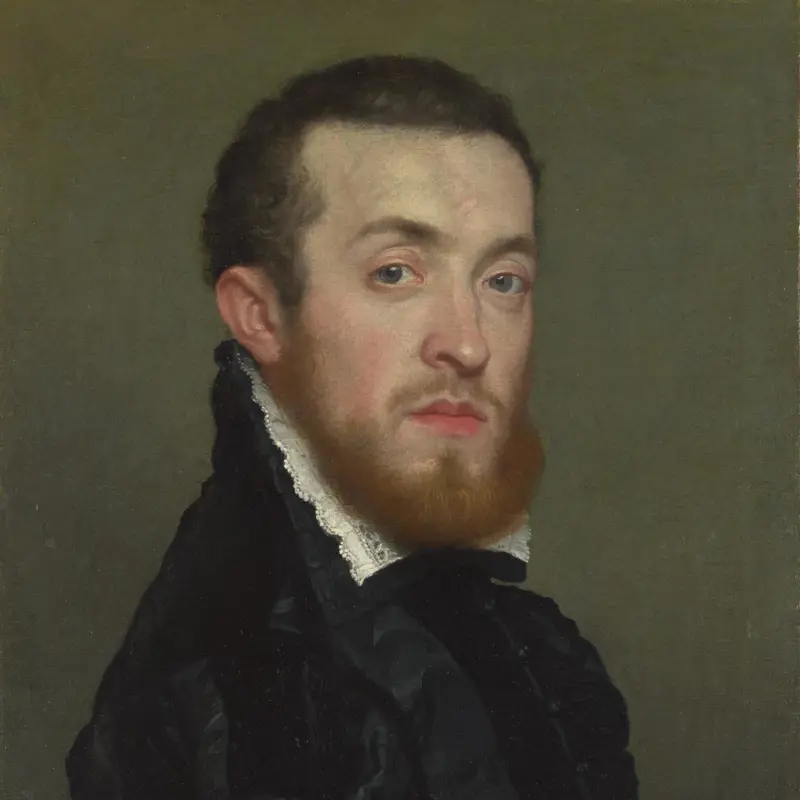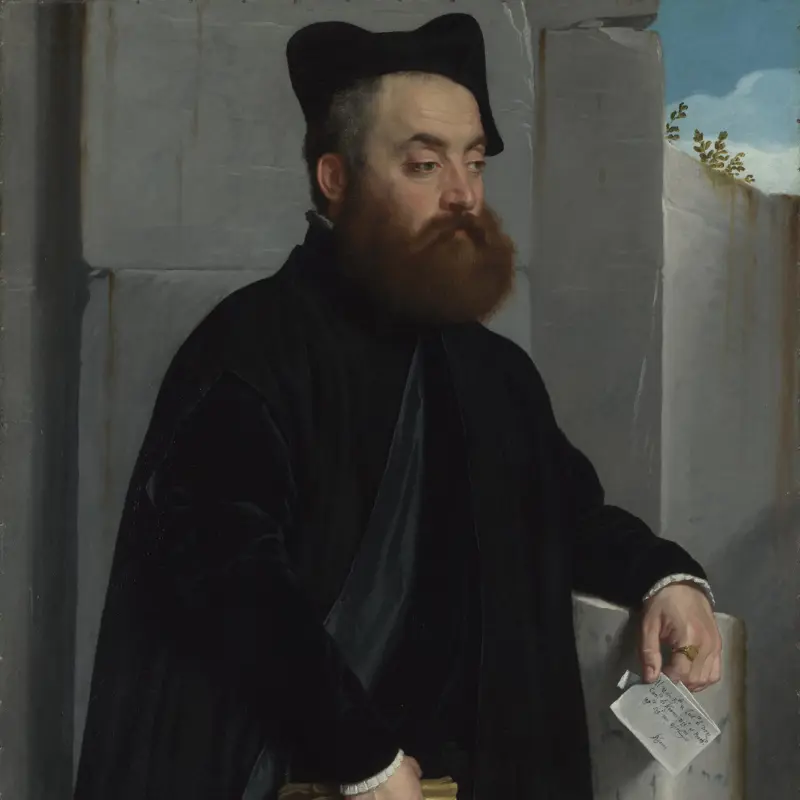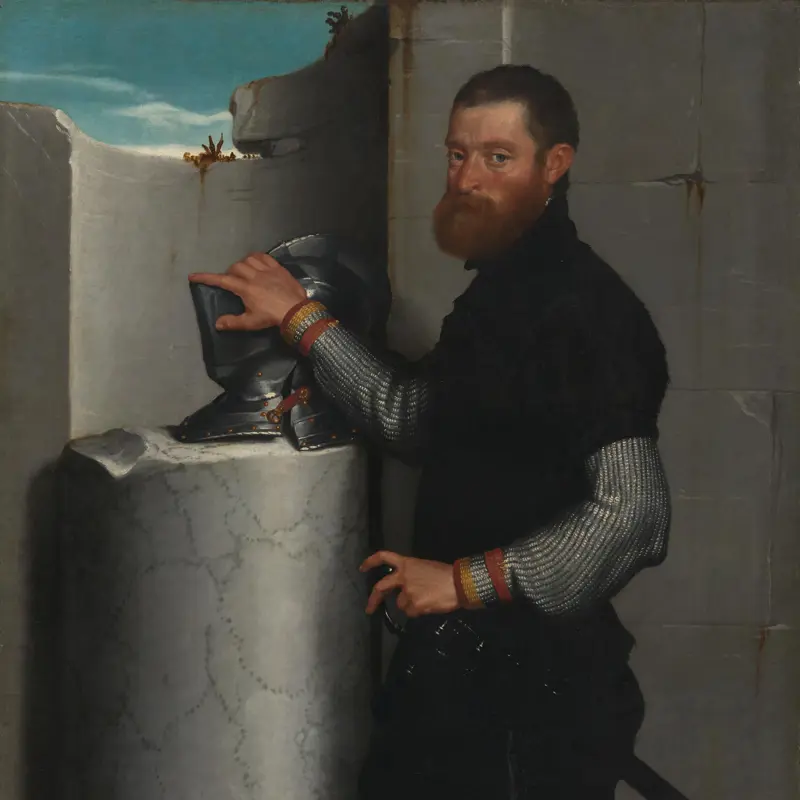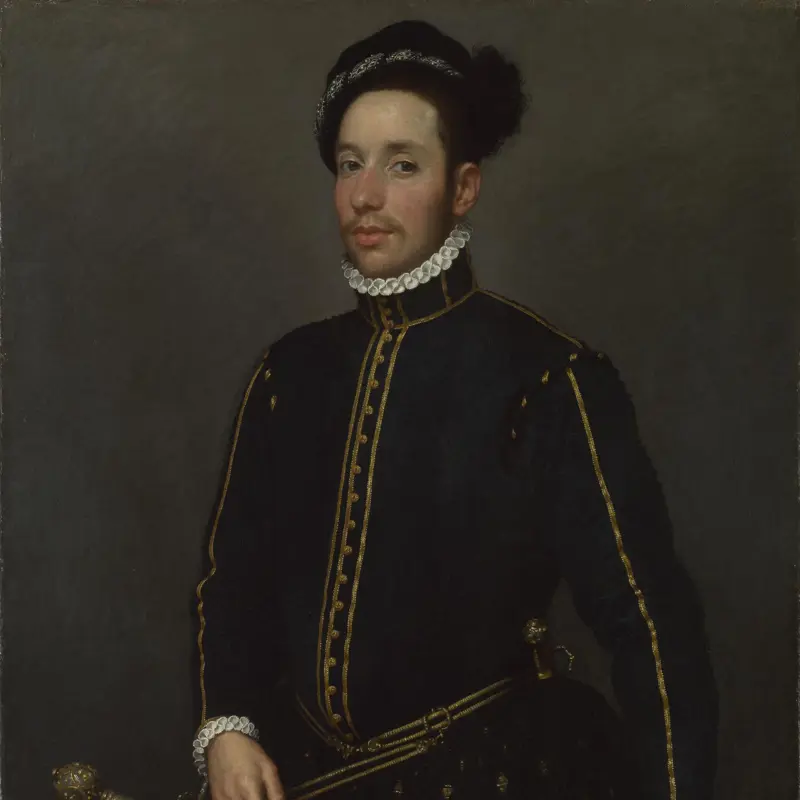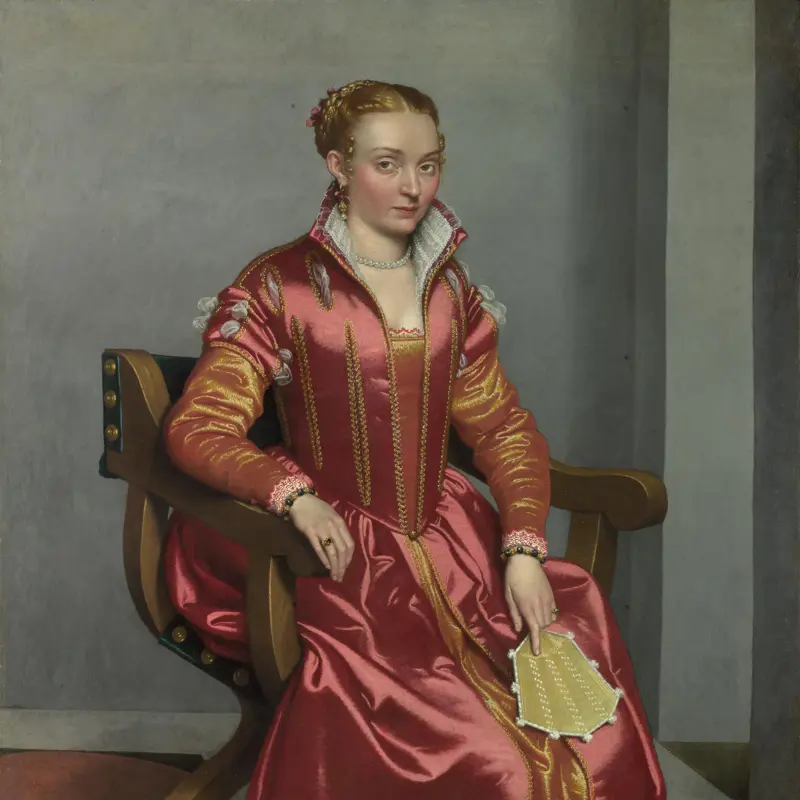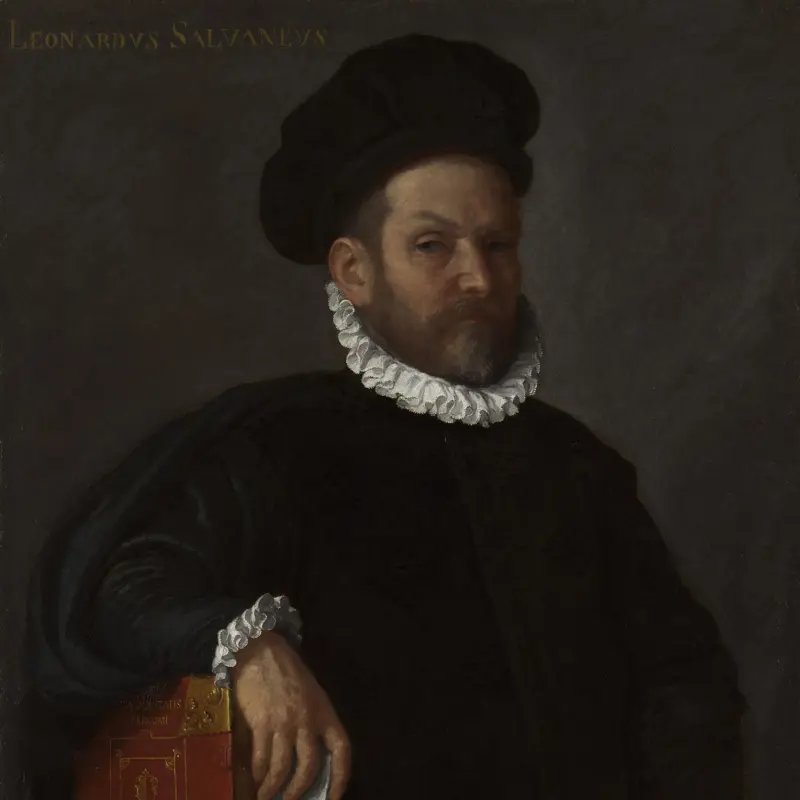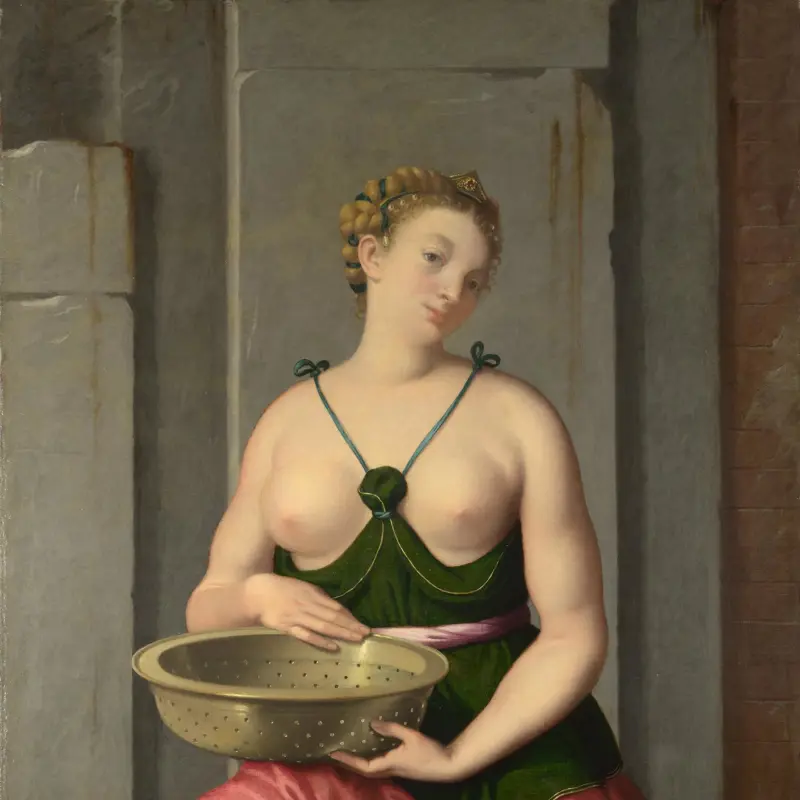Giovanni Battista Moroni, 'Portrait of a Man with Raised Eyebrows', about 1570-5
About the work
Overview
An unidentified man regards us with a look of affable irony, his eyebrows raised. His chain mail sleeves and tunic would have been worn beneath plate armour, suggesting that he engages in some form of military activity. Similar costume is worn by noblemen in other portraits by Moroni.
The sitter’s reaction to our presence – raising his eyebrows – creates a strong sense of psychological interaction. This expression is unusual in portraiture at this date although Moroni repeated it elsewhere. The feathery brushstrokes in the face, beard and hair bring a liveliness and spontaneity to this small, intimate portrait, and add to the sense that this is a fleeting expression painted rapidly from life.
Moroni uses unobtrusive diagonals set up by background shadows and the slope of the shoulders to give emphasis to the sitter’s raised eyebrows and the tilt of his head. The subtlety of both expression and composition is characteristic of Moroni’s late work.
Key facts
Details
- Full title
- Portrait of a Man with Raised Eyebrows
- Artist
- Giovanni Battista Moroni
- Artist dates
- 1520/4 - 1579
- Date made
- About 1570-5
- Medium and support
- Oil on canvas
- Dimensions
- 45.7 × 37.8 cm
- Acquisition credit
- Layard Bequest, 1916
- Inventory number
- NG3128
- Location
- Not on display
- Collection
- Main Collection
- Previous owners
- Frame
- 17th-century Italian Frame
Provenance
Additional information
Text extracted from the ‘Provenance’ section of the catalogue entry in Nicholas Penny, ‘National Gallery Catalogues: The Sixteenth Century Italian Paintings’, vol. 1, ‘Paintings from Bergamo, Brescia and Cremona’, London 2004; for further information, see the full catalogue entry.
Bibliography
-
1962Gould, Cecil, National Gallery Catalogues: The Sixteenth Century Italian Schools (excluding the Venetian), London 1962
-
1987Gould, Cecil, National Gallery Catalogues: The Sixteenth Century Italian Schools, London 1987
-
2001
C. Baker and T. Henry, The National Gallery: Complete Illustrated Catalogue, London 2001
-
2004
Penny, Nicholas, National Gallery Catalogues: The Sixteenth Century Italian Paintings, 1, Paintings from Bergamo, Brescia and Cremona, London 2004
About this record
If you know more about this work or have spotted an error, please contact us. Please note that exhibition histories are listed from 2009 onwards. Bibliographies may not be complete; more comprehensive information is available in the National Gallery Library.

